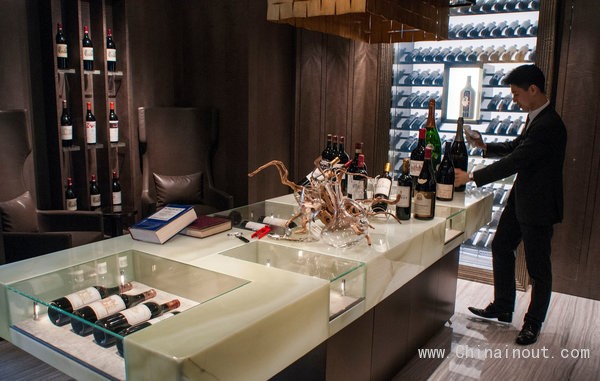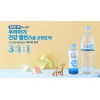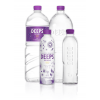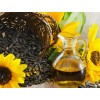顶级葡萄酒成为亚洲买家的奢侈品
来源:纽约时报
精品葡萄酒在亚洲市场中的价格居高,但还是有大量的买家。随着中国在去年取代法国和意大利成为红酒的最大购买者,亚洲买家如今在全球的葡萄酒市场中有着重要的影响力。现在,亚洲地区的客户在葡萄酒的挑选上也变得越来越成熟、有鉴别力和多样化。
“亚洲葡萄酒爱好者越来越多,他们也在享用越来越多的的葡萄酒,”佳士得中国区名酒部主管谭业明(Simon Tam)在谈及拍卖行近期的销售时说。“这个市场正在极其迅速地成熟起来。”
亚洲人历来有喝威士忌、白兰地和用粮食蒸馏的白酒之类的本土酒的传统,但并不喝葡萄酒。随着财富的日益增长,以及馈送礼品和寻找新型投资的喜好,亚洲富豪们近些年开始热衷于购买顶级葡萄酒和其他种类的奢侈物品。
香港在十年前的国际葡萄酒领域中还鲜少被提及,而自2008年葡萄酒税被废除后,香港成为了葡萄酒交易的重要枢纽。很多商家在此地开启了业务,其中包括声名在外的英国酒商贝瑞兄弟与鲁德(Berry Brothers & Rudd),它的历史可以追溯到1698年,以及致力于专业领域、专门销售由法国小型葡萄酒庄园生产的天然葡萄酒的公司La Cabane。
新加坡的葡萄酒价格中税收占相当大的比重,但即使这样,新加坡物流公司CWT还是在花费两亿新币(约合10亿元人民币)建造一个高端葡萄酒的储藏设施,建成后将可以在温湿度和光照可控的条件下,储存1000万瓶葡萄酒。
“对于亚洲买家来说,这更多关乎地位——把葡萄酒当作一种奢侈品来享用,”苏富比亚洲区葡萄酒部主管楼伯礼(Robert Sleigh)说。“他们愿意出可观的高价购买这些直接从葡萄庄园来的酒,并且非常看重酒瓶的外观。”
亚洲一些国家经济增长势头日趋缓慢,加上北京下决心遏制政府官员奢侈消费的举措,使得亚洲的葡萄酒市场冷静了一些。佳士得售出的葡萄酒平均价格为每瓶3万到6万港币,与2010年的15万至20万港币相比,有了大幅的下降,谭业明说。同时,Acker Merrall所售葡萄酒的平均价格在2011至2013年间下降了大约一半。
在葡萄酒兴起的早些年间,买家对自己的鉴赏力还不是很确定,所以只专注于几个有名气的品牌。法国波尔多葡萄酒在当中倍受青睐,一度主宰销售市场。
相比几年以前,如今的买家已经将触角伸到更多种类、不同产地的葡萄酒当中。这一趋势也反映了其他种类奢侈品消费的现状,比如包和衣服,最初中意于高识别度大牌的消费者开始变得更加自信并寻求个人风格。
“曾经有位顾客每周都会从我们这里购买一瓶波尔多葡萄酒,”在Winebeast工作的侍酒师文森特·菲隆(Vincent Feron)说。Winechest是一家小型葡萄酒商店,于去年在香港湾仔地区开张,主要销售法国和西班牙葡萄酒。
“现在,他开始尝试其他葡萄酒,而且特别喜欢朗格多克,”菲隆说,他提到的朗格多克地处法国南部。“人们喜欢知道更多。一旦他们开始信任你,他们也开始采纳你的建议。”
零售商和高档餐厅都在加强葡萄酒的种类,并且确保他们的员工熟知各类葡萄酒,以期应对亚洲客人日新月异的口味变化。
举例来说,坐落在海边的香港洲际酒店(InterContinental hotel)中有四家环境优雅的餐厅,各自都聘请了两位侍酒师。酒店餐饮部的高级经理克里斯托夫·特拉夫尼切克(Christoph Travniczek)说,他们存有1700种酒,每瓶至少价值75美元,而最贵的可以达到几千美元。客人还是会偶尔在一瓶酒上大肆挥霍几千美元。但他们“不再简单地只买酒单上最贵的,”特拉夫尼切克说。“他们买他们喜欢的,同时也听取侍酒师的建议。”
中国拥有将近14亿居民,持续推动着全球的消费,尤其是红酒销售,因为红酒在中国比白葡萄酒要受欢迎的多。中国在去年购买的红酒总量将近190万瓶,这一数字由Vinexpo葡萄酒及烈酒商贸展的组织者委派进行的一项调查得出,该展将于下月在香港举行。这个数字相比2008年翻了一倍多。中国同时也是世界上最大的葡萄酒生产国,但大多数出品的质量仍然很低。
香港、中国内地以及亚洲其他地区的葡萄酒爱好者还准备投入相当多的时间和努力,不仅享用饮品本身,还要获取品尝及购买决定所需的信息。
卡尔文·陈(Calvin Tan)在两年前开始着迷于葡萄酒,之后进修了两门葡萄酒方面的课程,其中一门在法国品酒学院(L’École du Vin de France)进行,该学院于2011年在香港设立了一个办公室。
“我需要一个爱好,而我又喜欢品酒和美食,所以这是完美的答案,”他说。
陈先生在香港工作,供职于一家美国银行,他并不是苏富比和佳士得所卖的顶级葡萄酒市场中的客户。他拥有过最昂贵的葡萄酒仅仅是价值800港币的一瓶意大利红酒。但他想要学习和拓展的热情——他现在最喜欢的是里奥哈(Riojas)和新西兰黑松果葡萄酒——展现了亚洲葡萄酒爱好者的转变。
“最初,那些报名参加我们活动的人对于葡萄酒知道的非常少,”法国品酒学院的香港代表说。“现在,很多人已经知道相当多了,并且还想要拓宽这方面的专业知识,”她说,此外她还提到学校正筹划在内地的北京和广州开设课程。
上述的情况给了葡萄酒专家们信心,即使很多地区的经济增长势头正在减缓,亚洲的购买者也会持续在葡萄酒上花大价钱。“我们还在梦想达到2010年和2011年那样的高点,”Acker Merrall的总裁约翰·卡邦(John Kapon)说。“但2014年已经有了个好的开始,大中华地区在国际市场中依然是头号驱动力。”(更多资讯请浏览中国进出口网)
Affluent Wine Buyers in Asia Find Their Confidence
HONG KONG — Six bottles of 1990 Romanée-Conti Burgundy sold to an Asian buyer at a Christie’s auction in Hong Kong last month for 980,000 Hong Kong dollars ($126,345). A case of wine from the Cros Parantoux vineyard in Burgundy, France, fetched $82,333 in a sale held by the American auction house Acker Merrall & Condit at a restaurant overlooking Hong Kong’s harbor.
Fine wine comes at a price in Asia, but there are plenty of buyers. Asian consumers have become a major factor in the global wine market, with China overtaking France and Italy last year as the biggest consumer of red wine. Now, customers in the region are getting more sophisticated, educated and diverse in their wine choices.
“There are a lot more wine lovers in Asia, and they are enjoying a lot more wines,” Simon Tam, head of wine at Christie’s China, said about the auction house’s recent sale. “The market is maturing very, very rapidly.”
Asians have traditionally been drinkers of whiskey, brandy and local spirits like baijiu, a liquor distilled from grain, rather than wine. But rising wealth, a penchant for giving gifts and a constant search for new types of investment have turned affluent Asians into avid buyers of top wines and other luxury items in recent years.
Hong Kong, which was barely featured on the international wine scene a decade ago, has become a major hub for wine trading since taxes on wine were abolished here in 2008. Dozens of merchants have opened operations, including famous players like the British company Berry Brothers & Rudd, which traces its roots to 1698, and niche establishments like La Cabane, which sells natural wines from small vineyards in France.
Even in Singapore, wher taxes add considerably to the price of a bottle of wine, CWT, a logistics company, is spending 200 million Singapore dollars ($158 million) on a high-end wine storage facility that will be able to store 10 million bottles in air-conditioned and humidity- and light-controlled conditions.
“For Asian buyers, it’s a lot about prestige — about enjoying wines as a luxury,” said Robert Sleigh, head of the wine department at Sotheby’s in Asia. “They are prepared to pay substantial premiums for wines that come directly from the vineyard and they put a lot of importance on the cosmetic appearance of the bottle.”
Slowing momentum in some Asian economies and Beijing’s determination to rein in flashy spending by state officials have helped to inject some sobriety into the market. Average lot prices at Christie’s wine sales in Hong Kong are 30,000 to 60,000 Hong Kong dollars (roughly $3,860 to $7,730), down from about 150,000 to 200,000 dollars in 2010, Mr. Tam said. The average price of bottles sold by Acker Merrall fell by about half from 2011 to 2013.
In the early years of the boom, buyers, still unsure of themselves, focused on just a few dozen notable names. French Bordeaux wines were a particular favorite and dominated sales.
Now buyers have spread their wings and are purchasing more types of wines, and from more places, than they did a few years ago. This trend echoes what is happening in other categories of luxury spending, like handbags or clothing, wher an initial allegiance to big-name, highly recognizable brands has begun to fade as shoppers have become more confident and individualistic.
“We have a customer who used to buy a bottle of Bordeaux with us every week,” said Vincent Feron, a sommelier who works at Winebeast, a small store that opened in the bustling Hong Kong neighborhood of Wan Chai last year and sells mostly French and Spanish wines.
“Now, he has started to explore other wines, and really likes Languedoc,” Mr. Feron said, referring to an area in southern France. “People like to be educated. As soon as they get to trust you, they are prepared to take your advice.”
Retailers and top restaurants have reacted to Asian consumers’ rapidly evolving appetites by beefing up their wine selections and making sure they have staff members who are well trained in wine selection.
The four elegant restaurants in the InterContinental hotel on the Hong Kong waterfront, for example, employ two sommeliers each. Among them, they stock 1,700 labels, costing at least $75 a bottle and as much as several thousand United States dollars at the top end, said Christoph Travniczek, a senior manager for food and beverage at the hotel. Guests do still occasionally splash out on wines that cost thousands of United States dollars a bottle. But they “are no longer simply buying whatever is most expensive on the wine list,” Mr. Travniczek said. “They buy what they like, and they listen to the recommendations of the sommeliers.”
China, with nearly 1.4 billion inhabitants, continues to drive global consumption, especially of red wines, which are far more popular in the country than whites. Nearly 1.9 billion bottles of red were consumed in China last year, according to a study commissioned by the organizers of the Vinexpo wine and spirits industry exhibition, which takes place in Hong Kong next month. That is more than twice the amount in 2008. China is also one of the world’s biggest producers of wine, though the quality is for the most part still low.
Wine fans in Hong Kong, mainland China and elsewher in Asia are also increasingly prepared to invest considerable time and effort in soaking up not just the beverage itself, but also the information that goes into drinking and purchasing decisions.
Calvin Tan caught the wine bug two years ago and has since taken two wine courses, including one at a French wine academy, L’École du Vin de France, which opened an office in Hong Kong in 2011.
“I needed a hobby, and I love drinking and eating good food, so this was perfect,” he said.
Mr. Tan, who works for an American bank in Hong Kong, is not in the market for top wines of the kind sold by Sotheby’s and Christie’s. The most expensive wine he ever had was an Italian red that cost about 800 Hong Kong dollars. But his eagerness to learn and branch out — his favorites now are Riojas and New Zealand pinot noirs — exemplifies the shift that is happening among Asian wine lovers.
“In the beginning, many of those who signed up for our activities knew very little about wine,” said Marjolaine Roblette-Geres, L’École du Vin’s representative in Hong Kong. “Now, many already know quite a lot, and they want to broaden their knowledge,” she said, adding that the school was considering offering classes in Beijing and Guangzhou, in neighboring mainland China.
All this gives wine experts the confidence that Asian buyers will continue to spend big on wines, despite the fading growth momentum in many of the region’s economies. “We still dream of the highs of 2010 and 2011,” said John Kapon, the chief executive of Acker Merrall. “But 2014 got off to a good start, and greater China remains the No. 1 driver of the global market.”。”(更多资讯请浏览中国进出口网)








